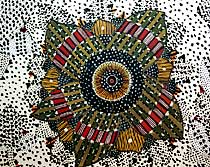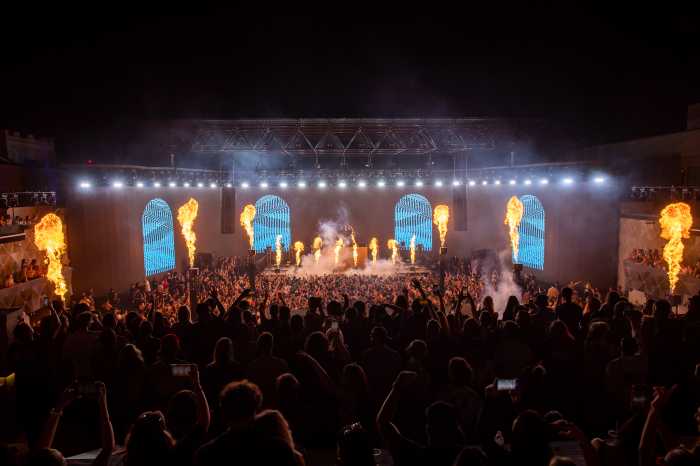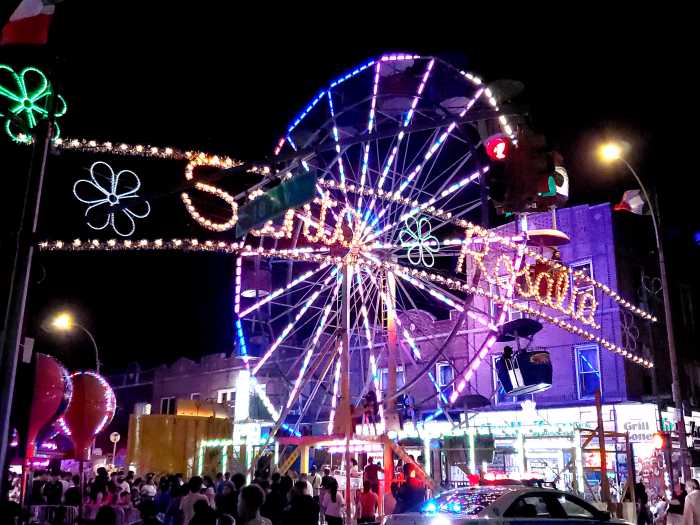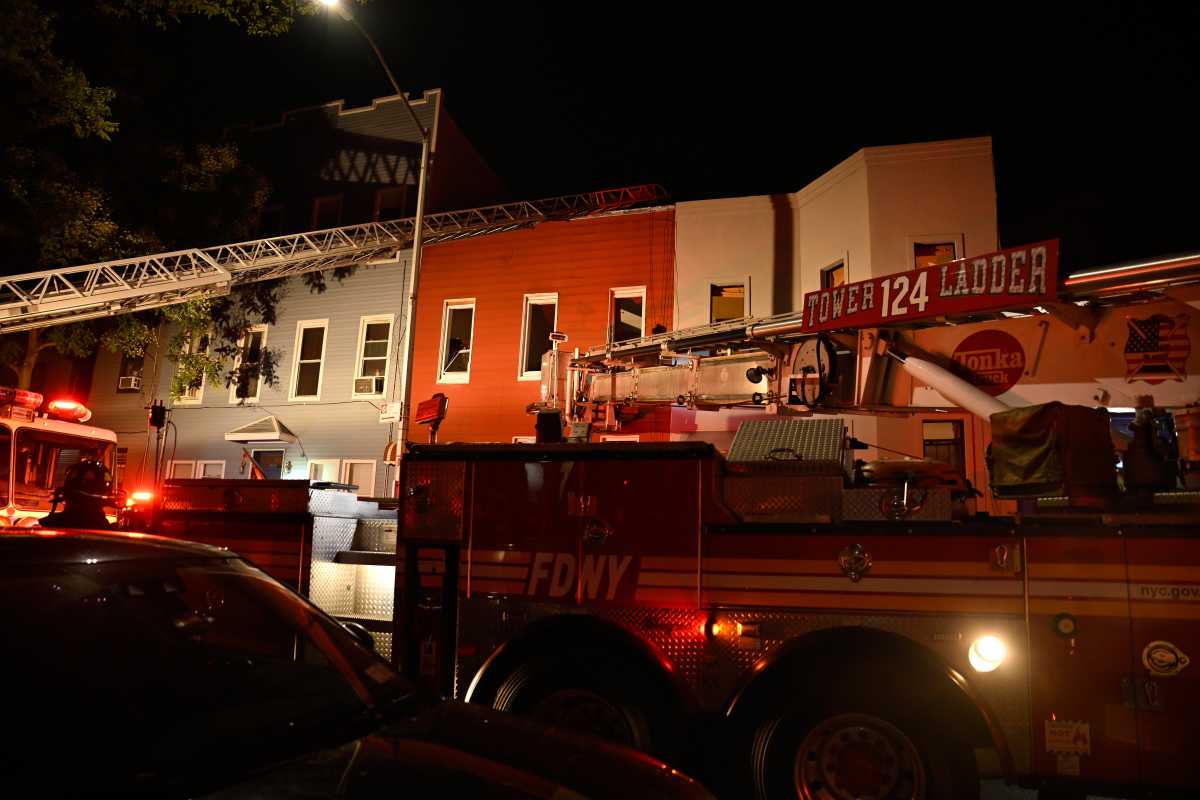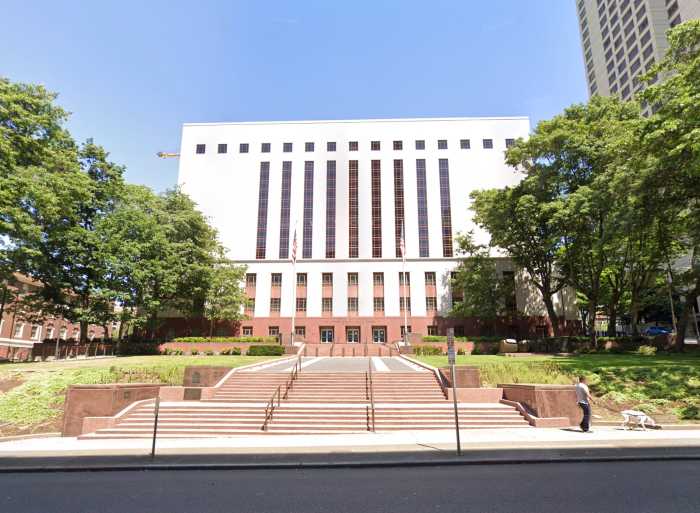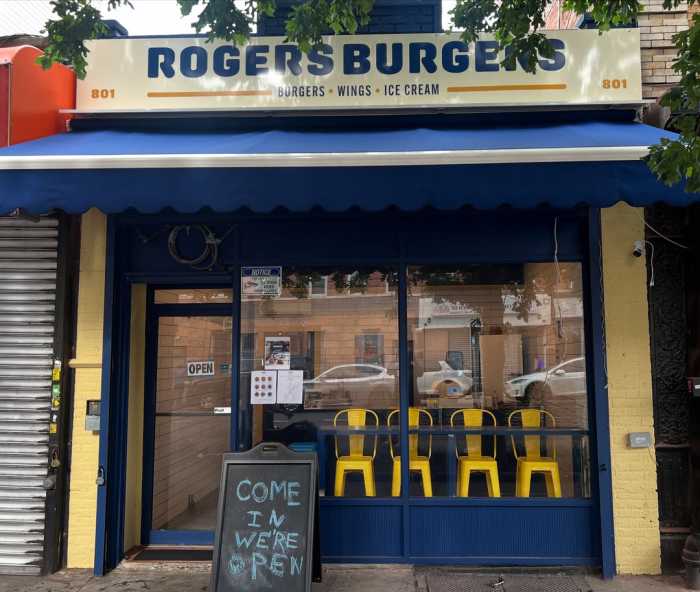Can knitting or typing be the stuff of
art – or such lofty pursuits as meditation?
"Meditation for the Hand," an art exhibit now showing
at Long Island University’s Salena Gallery, explores that theme
and, in the process, acts as a reminder of the importance of
quiet moments or places in our hectic urban lives.
While meandering my way through the otherwise silent multi-media
group show – which features artworks that were made by repetitive
hand movements such as typing, calligraphy or knitting – I was
assaulted by the jarring sounds of a soap opera and commercials
blaring from a television in the lobby adjacent to the gallery.
The fact that these intricate artworks were able to absorb my
attention is no small feat, but then most of these artworks are
examples of exacting technique and patience.
According to curator Hanne Tierney, of the Crown Heights art
gallery five myles, the show is part of the citywide Buddhism
Project involving 20 of the city’s major cultural institutions
exploring the relationships of Buddhism and the arts to contemporary
American culture.
In "Meditation for the Hand," the Hovik Knitting Commune’s
enormous "Mandala" – a geometric design symbolic of
the universe which is used in Buddhism as an aid to meditation
– is assembled in overlapping circles on the floor.
"I commissioned 300 feet of knitting to be turned into a
mandala from a Norwegian knitting commune," said Tierney.
"My neighbor [Crown Heights resident Sabrina Adams] then
turned it into a mandala."
The knitted artwork is an example of "when the hand does
repetitious movements, it calms the mind, like worry beads,"
explained Tierney. "The repetitious movement of pencil or
brush becomes a kind of chanting of the hand."
The commune’s "Mandala" has a predominantly gray perimeter
and, as it winds its way around to the center, it is shot through
with stripes of blues, browns and blacks in various widths. It
then gives way to inner circles of cream, brighter hues of pink,
orange, and red until it reaches an all-black center. The mandala
is more complicated at second glance; it’s intricate and, yes,
even snuggly.
Artist Barbara Hatfield, whose studio is in Williamsburg, has
two hypnotic works on display. The first, "ing," is
a series of wax characters – like speedily written calligraphy
or musical notes – that are mounted in a corner of the gallery.
The black, raised characters stand out in sharp contrast against
the gallery’s white walls. They mesmerize the viewer as she attempts
to follow the characters’ path to the corner, where they make
a 90 degree turn and continue on.
Hatfield’s second piece, "Chros," is a 9-foot-high
series of white pieces of paper (the height and width of street
name signs), that also have splashy calligraphy written in wax
on them. The splashes and drips convey the speed and energy that
may have contributed to writing these illegible words, poems,
or prayers.
Sophie Jeehuan Kim’s "Six O’clock AM" is a 4-feet-tall
by 18-feet-long pencil drawing made of innumerable little lines
that form larger undulating squiggles pointing in every direction.
Tierney has cleverly mounted the unframed paper to the curved
wall of the gallery, which adds to its kinetic power. When seen
from a distance, Kim’s lines have the hypnotic effect of sea
grasses swaying in the ocean.
Lee Etheredge IV’s "One Half," black and white photographs
with rows and rows of single-spaced, typed words, reminded this
viewer of the frightening scene in Stanley Kubrick’s 1980 film
"The Shining," when Jack Nicholson’s character reveals
that he hasn’t been working on his manuscript for days on end,
but typing "All work and no play makes Jack a dull boy"
on stacks of paper. (This activity did not, however, help to
ease the character’s anguish.)
In Etheredge’s case, the patterns of the typed words run in streams
over the photographs, which are placed vertically in a frame
that runs over 8-feet high. Some of the photos are sideways,
some upside down. All lend the feeling of a world gone topsy-turvy
while in the confines of its neat layout within the frame. While
the rigidly formatted words don’t have meaning left to right,
they have catch-words such as "consecrate" and "hallow"
that recall Abraham Lincoln’s "Gettysburg Address"
– alluding to yet another interpretation of the quiet pictures
of rocks, trees and pastures made more poignant in post-Sept.
11 America.
There is more to ponder in "Meditation for the Hand,"
with so many astounding examples of perfect technique, patience
and commitment by the artists to be recounted here. "Meditation
for the Hand" is another (mostly) quiet, necessary corner
for contemplation in bustling Brooklyn by five myles and Long
Island University’s Salena Gallery, which leaves us hungrily
anticipating their next projects.
"Meditation for the Hand,"
organized by five myles gallery, is on display at Long Island
University’s Salena Gallery (Flatbush Avenue Extension at DeKalb
Avenue in Downtown Brooklyn) now through Sept. 28. The reception
for the artists is Sept. 17 from 6 to 8 pm. The gallery is open
Mondays through Fridays, 9 am to 6 pm and Saturdays and Sundays
from 11 am to 5 pm. The exhibition is free and open to the public.
For more information, call (718) 488-1198.


